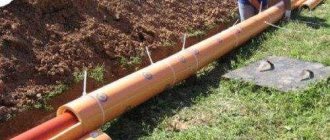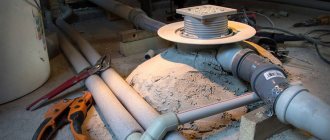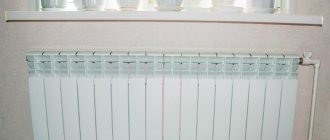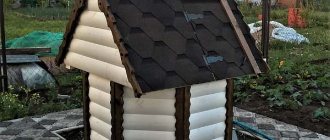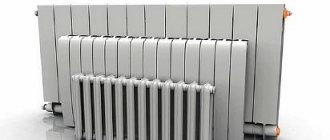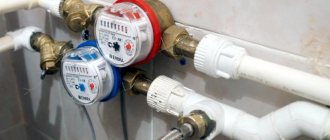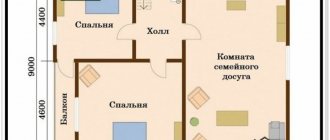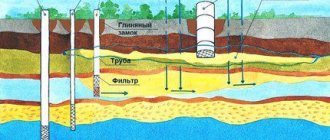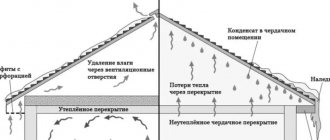Your own dacha or cottage, like any residential building, must provide its residents with maximum amenities, i.e. it cannot be done without a water supply. Therefore, the water supply to a private house from a well must be designed taking into account all water intake points not only in the building, but also in the local area, which may contain: a bathhouse, a summer kitchen and a tap for watering the garden.
To properly install water supply from a well, you will first need to equip the source itself, make a caisson, install a pump, dig a trench and lay a pipeline in it. In the house itself it will be necessary to install a water treatment system, install a boiler and install pipes.
Setting up a water supply on your own is quite a difficult task, however, if you act consistently and according to a clear scheme, the installation will turn out to be quite doable.
Main components of the water supply system:
- Source of water intake (sandy or artesian - depends on the depth of the aquifer).
- Pump – submersible or surface pump.
- Storage tank (500 l for a family of 3 people).
- Equipment (coarse and fine filters).
- Boiler.
Source device: choose the best one
To supply water year-round to your country house, sand or artesian wells are most often used. Let’s take a closer look at which one is best suited for your site.
A sand well can provide clean running water to a small house and its surrounding area, based on an average consumption of no more than 1.5 cubic meters. m/hour. It is ideal for a summer house or small cottage.
It is drilled to a depth of 10 to 50 meters, which is enough in most cases. The liquid in such a well is usually clean, but nevertheless, the installation of filters is mandatory, as it may contain various impurities. The productivity is quite modest, no more than 5 cubic meters per hour, and its service life is usually within 10 years.
If you plan to live in your home all year round and have water supply from a well, then an artesian will be the ideal choice.
It is drilled to a depth of more than 100 meters. The main advantage is considered to be a huge supply of clean water. It is capable of delivering up to 10 cubic meters/hour. Usually this is enough for uninterrupted water supply to a large house with a plot in which 4–6 people live. With proper care, it can last at least fifty years.
Traditional methods of keeping the reservoir clean
To create a natural ecosystem and constantly maintain a garden pond in good condition, experienced summer residents plant the bottom and coastal zone of the pond with plants such as nymphea, elodea, fontinalis, arrowhead, calamus, hornwort, marsh iris, cattail, and reed. In most cases, these are not purchased seedlings at all, but specimens dug up near the nearest river or swamp.
Plants taken from natural reservoirs perfectly fulfill their role in the newly organized biocenosis, without getting sick or suffering from changes in living conditions
Planting material (rhizomes) is often planted in ceramic pots, which are placed on the bottom. As winter approaches, the pots are moved deeper so that the plants do not die even if the pond freezes completely.
To maintain the natural ecosystem of garden ponds, some summer residents also advise:
- populate reservoirs with small river fish (for example, crucian carp), snails or freshwater crustaceans (daphnia);
- keep mesh containers filled with sphagnum moss or peat tablets in water;
- periodically lower a bunch of fresh willow twigs, cleared of leaves, into the pond.
Correct selection of pond flora and fauna will allow you to carry out complete water changes less frequently.
A well-organized garden pond does not require frequent, labor-intensive cleaning and does not require the use of expensive equipment and consumables.
How to bring water into the house
The principle of water supply is relatively simple and involves the presence of a small caisson - a reservoir located above the source, which contains equipment for controlling the well pump. If the winters in your region are not cold, a hydraulic accumulator is installed in the caisson.
The caisson can be made of plastic, metal or brick. Afterwards, a trench is dug from it to a depth of 15–20 cm below the freezing point of the soil. A pipeline is laid at the bottom through which water will be supplied. An electrical cable must also be laid in the trench, from which the submersible pump will subsequently be powered.
Winter option. If winters in your region are very cold, you need to insulate the water supply to your home.
The water treatment system is calculated for each site individually, depending on the analysis of water from the well. In this case, filters should be installed immediately before the entrance to the storage tank. Actually, this is exactly what the water supply scheme for a private house from a well with a hydraulic accumulator looks like.
Arrangement of a caisson when carrying water from a well
A caisson will definitely have to be installed if you operate the well all year round. This design is made in the form of a waterproof chamber, which is located in water-saturated soil. The caisson source is easy to maintain and use.
In addition to the caisson, you should also install a hydraulic accumulator, a submersible or surface pump, pipes, shut-off valves, and a head.
Why is this necessary:
- the equipment will be neatly located in the chamber; there will be no need to allocate space in a residential building. You just have to lay a pipe into the cottage and run an electric cable for the pump;
- when you live in a house in the summer, in order to drain water from the system in the fall, you will need to open the drain valve, which is located in the caisson.
If there are many consumers in the area, several pipelines will need to be removed from the caisson. Valves are installed to open or shut off the water supply.
To make it easy to remove the pump from the well for maintenance, you should install a winch in the upper compartment of the chamber.
The chamber prevents freezing of equipment located in the well. When the caisson is installed optimally, the well will not freeze, even if there is severe frost outside.
If a caisson is equipped, the well will not be negatively affected by cold, snow and other weather phenomena.
The main thing is that the caisson is completely sealed. Otherwise, contaminants from the chamber will penetrate through the casing pipe into the aquifer. To ensure that the water always remains clean, the head and caisson must be dry.
To determine the height of the caisson, it is necessary to take into account the depth to which the soil freezes. The caisson must be located below the freezing depth, so it is worth targeting at least 200 cm. To operate the well conveniently, the diameter of the caisson should be 100–150 cm.
This is interesting!
How to save on sewerage: design, selection of equipment, operation More details
The chamber can be metal, plastic, brick or reinforced concrete. At the bottom there should be a place for attaching the structure to the casing. In the walls of the caisson there are pipes through which water pipes and electrical cables are routed. To allow easy access to the equipment, a ladder is installed in the caisson. A tight lid is installed on top of the chamber.
Installation of water supply from a source under the house
It is possible to make a well inside a house, but due to some difficulties associated with the rather large dimensions of a conventional drilling rig. It follows from this that the mine will have to be drilled using a MGDU, which can be disassembled and carried inside.
You can do it even simpler: drill a well in advance, even at the stage of building the box, namely during the construction of the foundation. In such a situation, a conventional drilling rig will help you, and you will not need to overpay for drilling with the help of a MGBU, the services of which are usually more expensive.
Let us remember that the main purpose of a well in a house is to save money, since if the source is located in a warm basement, then there is no need to install a caisson, dig a trench, lay a water supply system and its thermal insulation. According to the most conservative estimates, installing a well under a house can save at least 30 thousand rubles.
Difficulties may arise during maintenance of the mine and the water supply itself. The fact is that it is unlikely that there will be much space in your basement for pumping equipment, filters and a hydraulic accumulator, and this imposes its own limitations.
Series connection of water intake points
This method is known as the tee method. When installing a serial connection, all points, such as a sink, shower, washbasin, are connected to the system in series, that is, one after another on one pipe. This method significantly reduces the cost of water supply, since much less consumables are required. A significant disadvantage of a series connection is the possibility of reducing the pressure in the system, which will be greater the further the drainage point is from the pump.
Parallel connection of water intake points
A parallel, or collector, connection is a method of installing a home water supply system in which a separate line is drawn for each water intake point. This system makes it possible to provide the same pressure for all consumers, but the cost also increases significantly.
Which sand filter is better to install?
In order to choose the right design specifically for your case, it is necessary to analyze the quality of the drinking liquid (the presence of impurities and the content of various substances). This is the most reliable way to determine which device is best for you - according to your case. Having determined the level of impurity contamination, you can install equipment whose power will be sufficient to solve your problems. This will allow you not only not to overpay for an expensive device, but also not to make a mistake with your choice.
Water filter for sand in the country: which one to choose
The hole or mesh type devices mentioned above are best suited here. Small stones, gravel, clay, sand particles will be retained with their help at the very beginning of the fence.
Industrial version
The main difference between household devices and industrial devices is power. Industrial equipment is designed to process large quantities of water, but in its design and functional use it is not much different from conventional equipment. However, it all depends on the specific purposes of use. Sometimes there are more complex options than those used to purify drinking liquid on a household scale.
Do-it-yourself plumbing according to the diagram
Let's look at the water supply system step by step using the collector connection method as an example:
- A shut-off valve is installed after the storage tank, followed by a tee.
- In the tee, the water flow is divided into two directions - for the filtration system and for other needs that do not need purified liquid (watering the garden, washing a car, washing machine).
- Water is supplied to a deep filter.
- Then a tee is installed, from which the cold and hot water line is supplied. It goes into the heater and is then distributed.
Types of coarse filters and criteria for their selection
Classification according to the type of filter element divides coarse cleaning systems into the following types:
- mesh, represented by metal cells;
- cartridge-type, purifying liquid by means of a loose cartridge filler that fills a plastic or iron flask;
- high-speed pressure ones, made in the form of a column with a filter composition inside.
Filters necessary for purifying water from contamination.
The following types of mesh systems exist:
- Backwash devices. To use in automatic mode, an electrical connection is required. A powerful stream of water forces sand and dirt from the surface of the mesh into the sewer.
- Mud traps or non-flushing filters. Provide for manual removal of blockages. When the throughput decreases, the devices are dismantled, the clogged cells are cleaned and installed in their original position. Use requires constant monitoring of water pressure.
Mud filters differ in the location of the sump.
The following executions are distinguished:
- direct systems of a T-shaped configuration, providing for placement in the lower part of the structure;
- angular, allowing installation in limited space, on longitudinal and transverse sections of the highway.
When choosing a filter type for sand removal , be guided by the following criteria:
- degree of clogging and chemical composition of the liquid;
- device bandwidth;
- requirements for water quality after filtration;
- installation location.
For economic and technical needs, it is enough to remove large fractions from the water supply. Satisfaction of household needs must be carried out using carefully prepared well fluid; filters are required to eliminate a larger amount of impurities.
Rules for laying pipes in the house
When installing a home water supply from a well, you should approach the choice of the diameter of the water pipes with the utmost responsibility, because the overall throughput and noise level depend on it.
To calculate the size, you should start from the approximate length of each individual line; the calculation is carried out from the accumulator to the water intake point:
- for a line less than ten meters long, the use of pipes Ф16-20 mm is allowed,
- for a route about thirty m long - Ф25 mm,
- more than forty-five meters long and not less than 32 mm.
Important: choose the diameter of the collector pipe correctly. If the system is small, it will not work correctly and will not be able to provide the necessary pressure for comfortable use by all consumers.
The water supply from the collector should be calculated taking into account the fact that about 5 liters flow through a regular tap in one minute. Knowing this indicator, you should calculate the amount of water consumed simultaneously from all points at peak moments; based on this indicator, the diameter of the collector is selected:
- 25 mm at a consumption of 30 l/min,
- 32 mm at a consumption of 50 l/min,
- 38 mm at a consumption of 75 l/min.
Storage septic tanks
The second popular method of wastewater disposal is its accumulation and storage with subsequent removal. This method is used even when working with nuclear waste, and human waste is safer in any case.
Accumulation plant is the cheapest and most popular method of wastewater collection
How it works? The sealed container is buried in the ground and periodically, vacuum cleaners are called to pump out the excess mass that has entered the tank. A storage tank is essentially an improved version of a cesspool. Once in it, the wastewater is divided into fractions: heavy substances sink to the bottom, and light substances (such as fat, etc.) rise to the top.
Calling a sewer truck for one yard is expensive and impractical; it is wiser to cooperate with neighbors and order a car for several farmsteads at once.
But even without taking this factor into account, “burying the problem in the ground” has its drawbacks. Firstly, the tank can fill up quite quickly; the wastewater level must be constantly monitored and the tank must not be overfilled. Secondly, vacuum trucks cannot enter any area, so the “accumulation zone” should be located close to the roadway.
Choosing pipes for water supply
- Products made of copper are considered to be the best, as they do not rust, have high strength and a long service life. The main disadvantage of copper products is their high cost.
- Metal-plastic products have also gained great popularity. This is due to the fact that such pipes are made of corrosion-resistant aluminum, coated on both sides with a thin polyethylene film. This multi-layer system makes it possible to guarantee high corrosion protection and tear resistance. In addition, the internal polyethylene coating is more resistant to deposits than metal products.
- Polypropylene is characterized by maximum durability and ease of installation. Also, one of the advantages of such products is their low cost and equipment. For example, the price of a simple soldering iron, with which you can lay water pipes throughout the house, rarely exceeds 800–1000 rubles.
Practical tips for installing piping around the house
For year-round operation of a water supply system from a well, you should use the following tips:
- The ideal home plumbing is done in such a way as to prevent pipes from passing through the walls of the premises. But, since the lining leads to a significant increase in the cost of the system, the pipeline is laid inside the walls, but using a protective metal cup, which protects them from deformation caused by shrinkage of the building.
- It is necessary to ensure a minimum gap of at least 20–25 mm between parallel pipes and building structures. This will greatly simplify future repairs. If you do not want to leave the wiring in plain sight, you should hide it in pre-prepared grooves, insulating them at the same time.
- If the water supply system is equipped with drain taps, they should be installed at the lowest points of the system so that water can flow through the drain tap by gravity.
- The easiest method for attaching pipes to walls is using plastic crabs. The distance between them should not exceed two meters with a pipe diameter of 16–20 mm; with a larger size, the distance between the fasteners should be smaller. A well-organized and executed water supply system has the following features:
- Has a minimum number of welded joints. This makes it possible to significantly increase the reliability of the units, while a less powerful and therefore cheaper pump can be used to pump water.
- All joints are made in full accordance with the installation diagram for this particular type of pipeline (series or parallel connection).
- Shut-off valves are installed in all important sections of the water supply system.
- Keep a minimum number of unreliable hose connections - it is advisable to connect even the flush tank on the toilet with a plastic tube rather than a hose.
Cheap septic tanks made of concrete rings
A simple, effective and environmentally friendly solution for owners of areas with deep groundwater and sand is the installation of several concrete wells isolated from precipitation.
How it works? Two or three concrete wells are buried vertically in the ground and connected to each other by overflows. The first well (the bottom of which is hermetically sealed) receives wastewater from the house, including solid waste. Liquid waste is poured either into a second well (at the bottom of which small fractions settle) or directly into a waste disposal well. Its bottom is covered with gravel, expanded clay, crushed stone - water seeps through them and goes into the soil.
In such a “concrete septic tank” anaerobic bacteria live and multiply, which do not need oxygen to function. Concrete wells can be of any size (KS 10-9 is often used) with an internal diameter of 1 m, an outer diameter of 1.6 m and a height of 0.9 m. From several concrete wells you can “assemble” one buried one.
Sectional diagram of concrete septic tanks
Among the disadvantages of the “septic” method are the following:
- water cannot be reused;
- it is not yet possible to achieve complete tightness of a system of several wells;
- the filter bottom of wells quickly becomes clogged and stops releasing water into the soil;
- To install such a system you will need serious construction equipment. A large amount of work will have to be done, but this will not save you from calling a sewer truck, as in the case of a storage unit.
Pipeline installation indoors
- The installation of the pipeline should begin after approval of a detailed plan for its passage through the building and the surrounding area. During its development, you can easily identify difficult areas and carefully work them out in advance, because it is easier to solve difficulties at the development stage than to lay a new trench. In addition, a detailed drawing will make it possible to draw up a more specific estimate, which also contributes to significant savings and reduction of unforeseen expenses.
- When laying a pipeline inside walls in grooves, remember that the cold water pipe must be below the hot water pipe. This prevents condensation from entering and prevents heating.
- Installation of a water supply system begins with laying a cold water line, starting with connecting the pipe to the inlet into the house. After this, it is connected to the hydraulic accumulator, then through a tee it goes to the water treatment system and then to consumers.
- The pipe from the coarse filter is led to the bathroom, where it is connected to the toilet cistern. There it is connected to the system through a tee and an additional shut-off valve, then the water is distributed sequentially among all users. Also with shut-off valves at each drainage point.
- The installation of a hot water supply system is carried out in exactly the same way; the only difference is the presence of a larger number of points for attaching the pipe to the walls to prevent sagging.
- After laying the lines and securely fastening them to the walls, you can begin to install plumbing equipment: sink, shower, washbasin.
- After installing all the equipment, it is highly advisable to perform a pressure test of the entire system and check the operation of the drain.
Operation of water supply
- After checking the functionality of all components, it is necessary to perform several test runs of your pumping station. Moreover, it should be turned on with minimal load.
- Do not forget that at first, when drawing water from a home well, it may be quite cloudy, and it must be given several hours to clear.
- It is necessary to adjust the pump capacity so that it matches the calculated capacity of the aquifer.
- When operating the pumping station, try to avoid short-term switching on in order to extend the life of the pump.
- Annual scheduled inspection and check of the technical part (filters, tanks, pump and the caisson itself).

